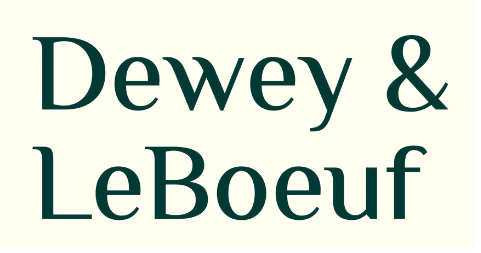In the intricate landscape of Bangladesh’s financial market, structured products emerge as sophisticated instruments designed to cater to unique risk-return objectives. Dewey Leboeuf, a leading law firm in Bangladesh, is at the forefront of guiding investors through the complexities of structured products, ensuring regulatory compliance and fostering financial growth. In this comprehensive article, we delve into the intricacies of structured products, their features, advantages, and the critical role played by Dewey Leboeuf in navigating this dynamic financial terrain.
Table of Contents
I. Understanding Structured Products
Structured products in Bangladesh are intricately designed financial instruments that deviate from conventional investment avenues. They are crafted to meet distinctive risk-return objectives by incorporating non-traditional payoffs from various underlying assets. Fundamentally, structured products link their returns to traditional returns from underlying assets but combine them with swaps, futures, and other derivatives to enhance participation in both upside and downside scenarios.
Components of Structured Products:
- A Bond Component: This ensures capital protection, guaranteeing that the investor receives 100% of the capital invested if the underlying asset underperforms.
- Underlying Equities: One or more underlying equities enhance the overall return on investment. These can be a single instrument or a basket of instruments across different asset classes.
- Derivative of the Underlying Asset: Derivatives, commonly options on the underlying asset, are used to determine the overall risk in the product. Derivatives allow investors to customize underlying asset classes to meet specific financial goals.
Features of Structured Products:
- Tenure: Typically long-term, structured products require a lock-in of at least 12 months, with an investment horizon of 2-3 years to maximize returns.
- Fees: Like other professionally managed financial instruments, structured products attract varying fees.
- Mix of Conventional Instruments: A blend of multiple financial instruments is integrated into structured products to achieve predetermined goals.
- Ticket Size: Structured products necessitate a minimum investment by investors if invested directly.
- Risk: The risk associated with structured products varies based on their structure, ranging from conservative to aggressive.
II. How Structured Products Work
To illustrate the functioning of structured products, let’s consider an investment of Tk. 100 in a product offering capital protection over a 3-year horizon:
- Tk. 77 is invested in a debt instrument ensuring capital protection, maturing to Tk. 100.
- Tk. 23 is allocated to purchasing another asset class and a derivative instrument, such as a call option on an index like NIFTY.
If, at the end of three years, the NIFTY generates a 20% return, the call option yields Tk. 40. The total return on the maturity of the structured product is Tk. 140. However, if NIFTY falls below the initial investment level, the derivative generates no value, and the fund still yields Tk. 100 with the capital protection clause.
This illustration highlights the importance of capital protection clauses, preventing investors from losing their principal in the event of underperformance.

III. Advantages of Structured Products
- High Customizability: Structured products are uniquely designed for each investor, catering to individual preferences and risk-return profiles.
- Varied Objectives: These products can be tailor-made to achieve diverse financial objectives, including growth, income, or a combination of both.
- Monetizing Market Views: Investors have the flexibility to customize products based on their market views, maximizing benefits from predicting market trends.
- Choice of Capital Protection: Investors can opt for capital protection clauses, ensuring the return of principal in case of underperformance.
IV. Things to Keep in Mind
- Complex Instruments: Structured products are intricate and involve various risk-bearing instruments, including derivatives. Investors must understand the inherent risks.
- Liquidity Concerns: Unlike other liquid instruments, structured products are not easily tradable in the secondary market. Investors should be prepared to hold them until maturity.
- Risk Tolerance: Before investing, assess your risk tolerance and comfort with potential losses. Understand if you rely on structured product income or view it as a supplementary benefit.
- Credit Risk: The 100% return of principal is subject to the credit risk of the issuer of the underlying debenture. Economic factors can impact the issuer’s credit profile.
V. The Role of Dewey Leboeuf: Navigating Regulatory Compliance
Dewey Leboeuf stands as a stalwart in guiding investors through the intricacies of structured products while ensuring compliance with evolving regulations. The law firm’s role encompasses:
- Risk Mitigation Strategies: Formulating effective risk mitigation strategies to align mutual fund deals with broader business strategies.
- Regulatory Advocacy: Actively advocating for clients in understanding and adhering to evolving legal and regulatory requirements, contributing to market stability and growth.
- Comprehensive Compliance Assurance: Ensuring comprehensive compliance with recent reforms and regulatory changes, allowing clients to navigate the evolving market with confidence.
In conclusion, structured products in Bangladesh represent a unique avenue for investors seeking customized risk-return profiles. Dewey Leboeuf’s commitment to legal excellence ensures that investors navigate this complex terrain with confidence. As the financial market in Bangladesh continues to evolve, structured products, guided by Dewey Leboeuf, are poised to play a pivotal role in fostering financial growth, offering investors innovative solutions tailored to their individual needs.
E-mail: info@deweyleboeuf.com
Phone: +971 58 690 9684
Address: 26B Street, Mirdif, Dubai, UAE
